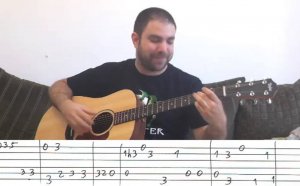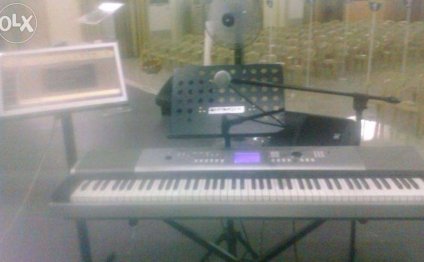
Basic Guitar lessons for Kids
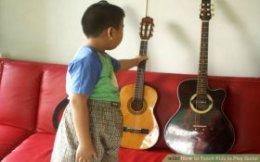 Help them choose the right instrument. Guitars come in all shapes and sizes and it can be quite bewildering to someone buying their first guitar. Don’t encourage spending too much. It’s worth remembering that they are almost certainly going to want to upgrade after a year anyway, by which time, they will have a far better idea of exactly which instrument suits them best, but also, don’t go for cheap guitars that are impossible to tune and difficult to play. The single most important criteria are: Is the guitar comfortable to hold? Is it easy to play notes and chords on? Consider half and three-quarter size guitars and try both steel and nylon string guitars.
Help them choose the right instrument. Guitars come in all shapes and sizes and it can be quite bewildering to someone buying their first guitar. Don’t encourage spending too much. It’s worth remembering that they are almost certainly going to want to upgrade after a year anyway, by which time, they will have a far better idea of exactly which instrument suits them best, but also, don’t go for cheap guitars that are impossible to tune and difficult to play. The single most important criteria are: Is the guitar comfortable to hold? Is it easy to play notes and chords on? Consider half and three-quarter size guitars and try both steel and nylon string guitars.
Get them to make friends with their guitar. Rather than a reverential one-step-at-a-time-let’s-learn-to-play-correctly approach, try to invite experimentation and freedom of expression from day one. For example, get them to lightly tap a rhythm on the sound box of the guitar. Get them to accompany you on ‘percussion guitar’. The best way to do this is to lightly tie a sock round the neck of the guitar to mute the strings, then let them experiment with their right hand playing different natural strumming patterns. Encourage them to vary dynamics, tempo and complexity of rhythm.
Help them tune it. I don’t usually attempt to actually teach them to tune their guitars early on, but I make sure their guitar is well in tune for the lesson and also check to see if there is someone at home who can help them keep it in tune. Learning to tune a guitar is actually quite tricky for kids. Ultimately of course, it’s very beneficial for them to learn to tune by ear but, initially it is far more important to make tuning easy. So cheat and get them a tuning machine that is simple to operate, then patiently help them use it.
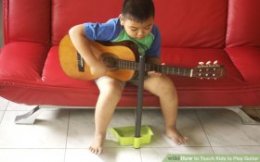 Go for teaching them the simplest possible things first. I use Theme from James Bond in three parts. Also Single String Boogie. Then riffs from: Seven Nation Army (White Stripes), Sunshine of Your Love (Cream), Another One Bites the Dust (Queen), Smoke on the Water (Deep Purple)etc…. All instantly recognizable, simple and easy to play. (See resources below for links to tab and sound files for some of these ideas.)
Go for teaching them the simplest possible things first. I use Theme from James Bond in three parts. Also Single String Boogie. Then riffs from: Seven Nation Army (White Stripes), Sunshine of Your Love (Cream), Another One Bites the Dust (Queen), Smoke on the Water (Deep Purple)etc…. All instantly recognizable, simple and easy to play. (See resources below for links to tab and sound files for some of these ideas.)
Repeat, repeat, repeat. Repetition is a vital part of learning and fortunately, kids are quite often happy to play the same thing again and again. Encourage this and resist the (adult-conditioned) tendency to want to "Always break new ground". Note that when a kid says they like a particular tune, it almost always means "I am confident I can play this". Conversely when they say "I don’t like …(a particular tune)..." It should be interpreted as: "I find this too difficult for me to play at the moment".
Conversely when they say "I don’t like …(a particular tune)..." It should be interpreted as: "I find this too difficult for me to play at the moment".
Work against the clock to improve chord changing speed. When it comes to improving chord changes a great trick is to teach a couple of new chord shapes (say A and D) and then say: "Right – let’s see how many times we can change from one chord to the other in a minute". Set a timer and go for it. Then pause to make a few suggestions about how to make the changes easier (always move fingers in the same order, feel where the strings and frets are rather than look...)- Then try again and see if they can break their record.
Simplify chords. If they want to learn a particular tune, but the chords or riffs are beyond their current ability level, try to figure out ways of simplifying them. Sometimes this means changing key, using a capo or just working out fingerings of chords on three strings rather than four, five or six. It does take some musical skill, but, that’ll just help you expand your own musical capabilities!
 Right at the start, try to discover whether a kid prefers playing single notes or chords. Some take to melody and riffs first, others prefer strumming chords. Whatever they find easiest and most enjoyable – go with it! As they grow in confidence and physical size and strength, they’ll find it easy to pick up the other side of learning, so there’s no rush to broaden out.
Right at the start, try to discover whether a kid prefers playing single notes or chords. Some take to melody and riffs first, others prefer strumming chords. Whatever they find easiest and most enjoyable – go with it! As they grow in confidence and physical size and strength, they’ll find it easy to pick up the other side of learning, so there’s no rush to broaden out.
Beyond teaching open string names – don’t worry about theory. There is no sense in mystifying the subject by introducing theoretical concepts too early on. However, don't sell the kids short, either. Chances are that if they're in elementary school that they've already begun to learn the basics (e.g. note names, definitions of things like scales, keys) and you can remind them of these whenever it becomes appropriate to the lesson. Theory shouldn't be your main focus, though peppering a few lessons with it can be helpful.
10
Encourage practice, but beware of making it too much of a chore. Initially, best results are obtained by several very short stints of practice, rather than one long one. Little and often is the key.
11
Encourage singing. Singing along to what they are playing comes naturally to kids and there are many benefits to encouraging this. Initially, this might appear like overload and mean that their strumming remains very basic, because most of their attention is on singing, but actually this will soon sort itself out if you show patience.

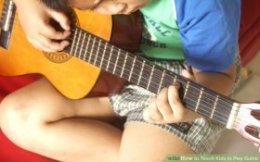
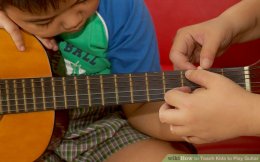
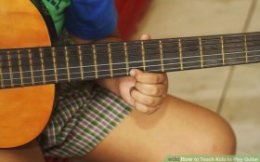
YOU MIGHT ALSO LIKE
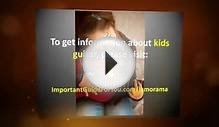

Share this Post
Related posts
Acoustic Blues Guitar Lessons for Beginners
Every guitar player experiences a major turning point early on in their education. After the requisite, and often times…
Read MoreYouTube Guitar lessons for Beginners acoustic
How to Get the Most from Your YouTube Learning Experience Want to improve your playing, but don’t have money or time to dedicate…
Read More

